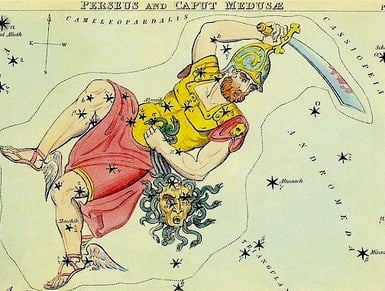This post is written by Mary Chase, Ph.D., an expert in curriculum design, literacy education, and technology integration.
Why do educators make such a big deal about recognizing patterns of information and organizing facts? These skills are necessary to developing expertise. Expert knowledge goes beyond mere recall of facts to the ability to connect new information to old and create new understandings. John Bransford, an educational psychologist whose findings have centered on these ideas, has gone so far as to say, "Helping students to organize their knowledge is as important as the knowledge itself, since knowledge organization is likely to affect students’ intellectual performance." Focusing on patterns of information (rather than just discrete facts) is also important because these patterns are visual in nature and easily recalled.
In an earlier post, we explored dual coding and the importance of images. Information that is encoded in the brain both visually and verbally is recalled with greater facility.  Consider, for example, how we recognize constellations more readily than the individual stars that form them. Consider, too, that if one has studied mythology, it’s difficult to separate the associated story from the image. Along with the positions of the stars that form Perseus come snaky-haired Medusa and her Gorgon sisters, and possibly even a memory of where we first learned this information—all in an instant. What does not appear is any paragraph we might have read. That textual content is embedded in the image in our memory.
Consider, for example, how we recognize constellations more readily than the individual stars that form them. Consider, too, that if one has studied mythology, it’s difficult to separate the associated story from the image. Along with the positions of the stars that form Perseus come snaky-haired Medusa and her Gorgon sisters, and possibly even a memory of where we first learned this information—all in an instant. What does not appear is any paragraph we might have read. That textual content is embedded in the image in our memory.
It is this kind of immediate, contextualized access to information that contributes to a learner’s expertise. Experts don’t need to relearn the information that forms the basis of their understanding. It’s just there; ready to inform other new experiences and data.
Organizational patterns can form automatically, but not necessarily. In schools, teachers are intellectual mentors who provide opportunities for their students to discover patterns such as cause and effect, similarities and differences, temporal sequences, and so on. The most effective way they do this is through the use of graphic organizers. However, unless students have a role in determining how information is to be organized and finding patterns within it, even the best graphic organizer can become just one more worksheet.
This is why the dynamic learning environment provided by Ideaphora is so powerful. When reading material becomes flexible and individual words are easy to move, the physical task of organization is streamlined with drag and drop capabilities. From there, students connect words and discover webs of meaning among them. They personalize their understandings according to their prior knowledge. Every student may have access to the same text, but the way they organize it is uniquely theirs, tailored to their understanding and purposes. Most importantly, though, the information pattern they create in the interface is simultaneously encoded into their memories, available for further enhancement as they grow in expertise.
To examine this learning strategy in your classroom, try Ideaphora with your students for free. Sign up for the Classroom Pilot Program.
Participants in the Classroom Pilot Program can also apply for a grant worth up to $1,500. Grants will be awarded to educators demonstrating creativity, innovation and the ability to impact student learning when pairing knowledge mapping with digital content.


